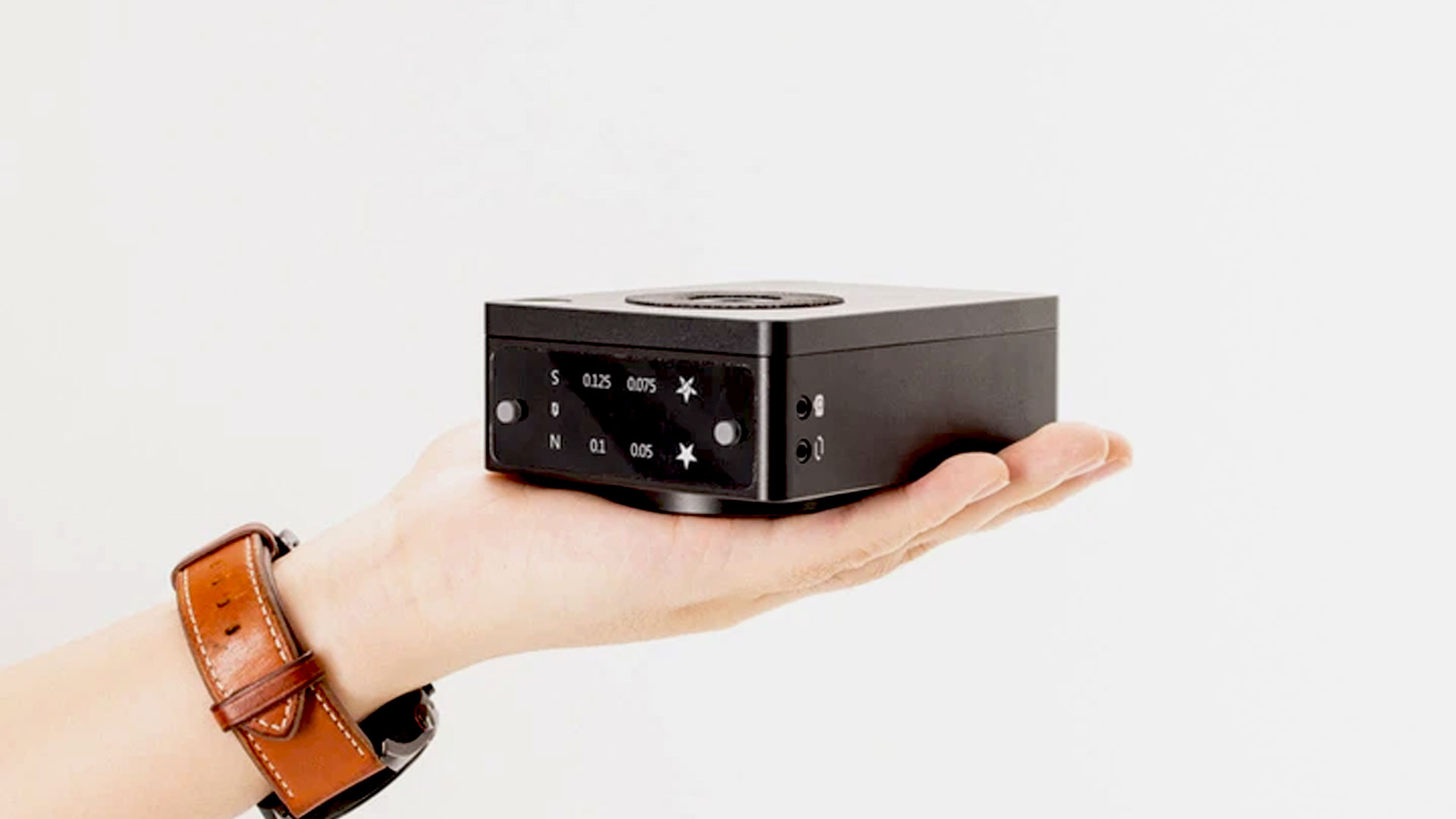Space Verdict
The Move Shoot Move Star Tracker is a really lovely piece of kit. There are a few compromises, but all-in-all, it does a superb job.
Pros
- +
Small and light
- +
Affordable price point
- +
Excellent battery life
Cons
- -
Doesn't work well with longer lenses
- -
Can be tricky to set up
- -
Need additional gear to maximize potential
Why you can trust Space.com
The Move Shoot Move star tracker is a small and lightweight star tracker for astrophotographers. At just $209 (roughly £155), the Move Shoot Move Star Tracker is more or less the cheapest star tracker on the market. But what good is it for photographers?
Every astrophotographer knows the 500 rule. It's a way of working out how long any exposure can last, at any given focal length, before the rotation of the planet you’re on gives itself away and the stars start to smear across the sky. In simple terms, you take your focal length in millimeters, divide it by 500, and that's the longest theoretical exposure time the stars will stay sharp. So a 50mm lens gives you a very short maximum exposure time of 10 seconds. A 25mm lens doubles that, to 20 seconds and so on. If that doesn't make sense, read our astrophotography for beginners guide.
Dimensions (inches): 1.7 x 3.15 x 3.9”
Weight (lbs.): 1lb
Capacity (lbs.): 6.6lbs
Connection type: USB-C for charging, 2.5mm for camera connection, 2.5mm connection for slider connection. Battery life: 5hrs rotation or 3,000 shots.
All is well and good, but it means that even on the longest lenses you'll be limited in terms of how bright your image gets before you need to start ramping up the ISO, with concomitant compromises in terms of noise and therefore overall image quality.
Enter star trackers, beloved of astrophotographers: mount your camera to a device that rotates at the same rate as Earth, allowing you theoretically unlimited exposure times. Want to shoot the Milky Way at ISO 100? With a star tracker, you can, even if your lens doesn't have the fastest aperture around.
At only 450g, it's also one of the lightest, allowing fleet-footed astrophotographers to bring it with them even if weight is a consideration. But with other entry-level star trackers coming it at nearly double the price, the hunt for compromises is on: how does the Move Shoot Move stack up against the competition?
Move Shoot Move star tracker review
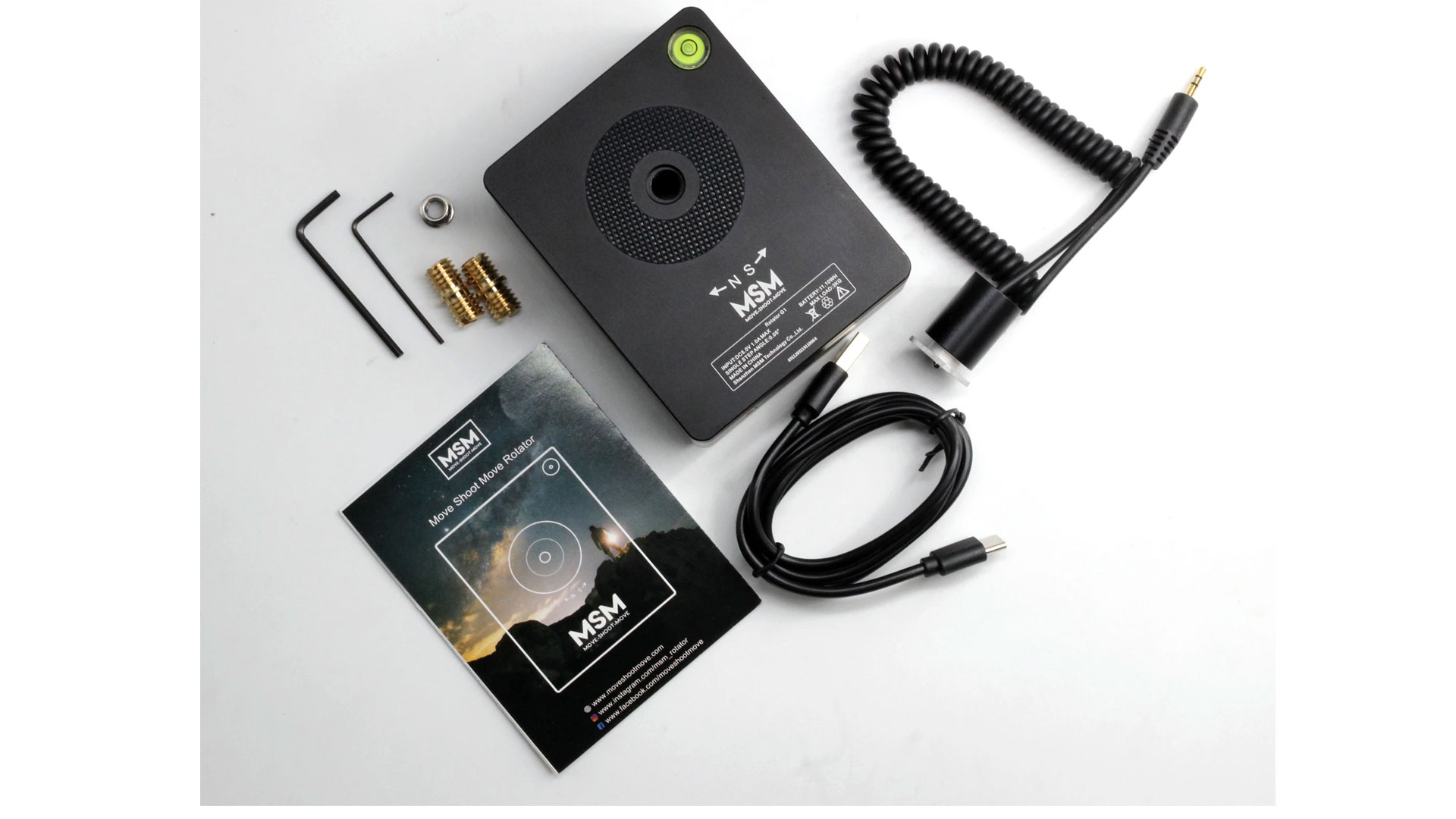
Move Shoot Move Review: Design
- Very compact
- Can charge whilst in use
- Feels well made and robust
The Move Shoot Move is a compact little thing, which is a huge part of its appeal. Compare it to the likes of the Sky-Watcher Star Adventurer 2, ($435, admittedly with a few more talents) and you will see what we mean. The Move Shoot Move tips the scales at just 450g, which combined with its size of 45mm x 80mm x 100mm makes it genuinely pocketable.
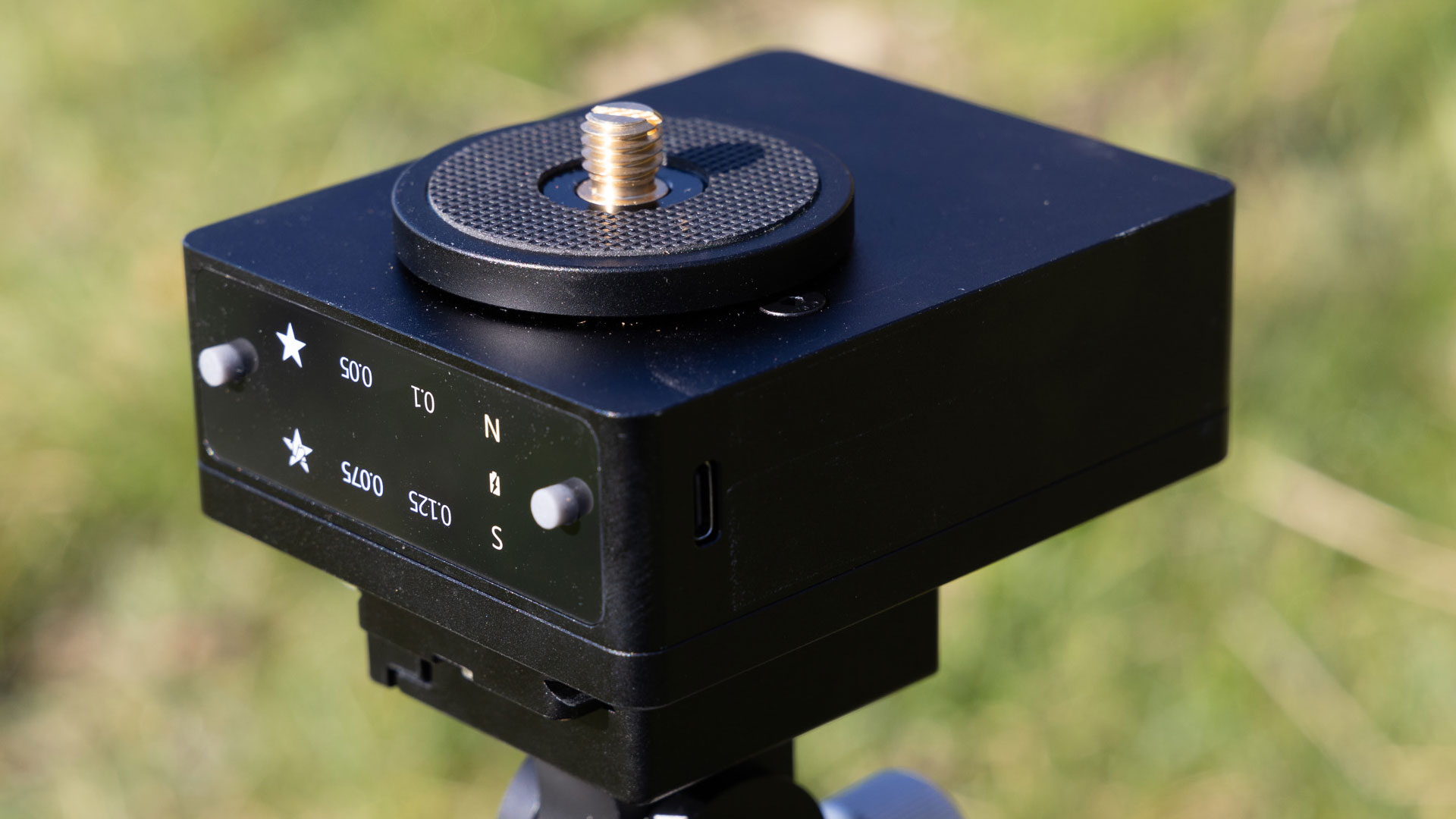
It has a simple-looking design. Made of tough-feeling metal, the top disc (the bit that rotates) has a grippy circle of rubber on it to minimize slipping, while the front has just two buttons. One powers the unit on and off and can also be used to let it know which hemisphere of the Earth it's in, while the other varies how quickly the Move Shoot Move rotates. You get the option of what we came to call “normal”, in which the Move Shoot Move matches the rotation of the Earth for steady long exposures, and half-speed, which allows much longer, rather than theoretically indefinite, wide-angle exposures of the Milky Way. There’s also the option to set the Move Shoot Move up to provide 0.125°, 0.1°, 0.075° and 0.05° of movement, allowing you to shoot timelapses with rotations in between them. More on this in a bit.
Breaking space news, the latest updates on rocket launches, skywatching events and more!
Otherwise, there are a pair of 2.5mm ports on one edge: one for connecting a camera so the Move Shoot Move can shoot its own images, and the other for connecting to a slider, allowing the slider to direct the Move Shoot Move to both turn and shoot. Finally, there's a USB-C port on the other side for charging. Usefully, the Move Shoot Move can continue working while it's being charged, so if you find yourself low on juice you can always connect it to a power bank. In fairness, Move Shoot Move claims five hours of continuous rotation will probably be more than enough — that's 60 five-minute exposures!

Also in the bag, before you've bought a few essential accessories (see below), you get a hot shoe trigger cable, so the MoveShootMove can communicate with your camera when it's in time-lapse mode, a set of Allen keys, and a pair of brass tripod studs. The bag itself is worth a mention, its sturdy-feeling fabric makes it a safe-feeling place to store such a precision piece of kit.
Once you come to use the MoveShootMove, or ideally before, given it involves accessories being ordered and delivered, you'll realize that the $209 price isn't the whole story. You'll need a frickin' laser, at least: using any star tracker requires you to be aligned with Polaris (the North Star), which on wide-angle lenses can be done accurately enough with a powerful laser pointer. You can buy one on the MoveShootMove website for $69.98 (roughly £52), which usefully comes with a rechargeable battery.
You'll also need a tripod head — using the MoveShootMove at all requires two tripod heads: one on your actual tripod, to which the MoveShootMove is mounted, and then another screwed to the top of the MoveShootMove, on which your camera is placed. Don't do what the economically-minded team at space.com tried and use two ball heads: getting a ball head tripod mount lined up with the north star — a pinprick of light some 400 lightyears away is, although not impossible, sufficiently hard enough that most of the fun of astrophotography is instantly wicked away. We had success with MoveShootMove's own geared tripod head ($89, roughly £66), which mounts to your MoveShootMove Rotator and allows very, very precise adjustment.
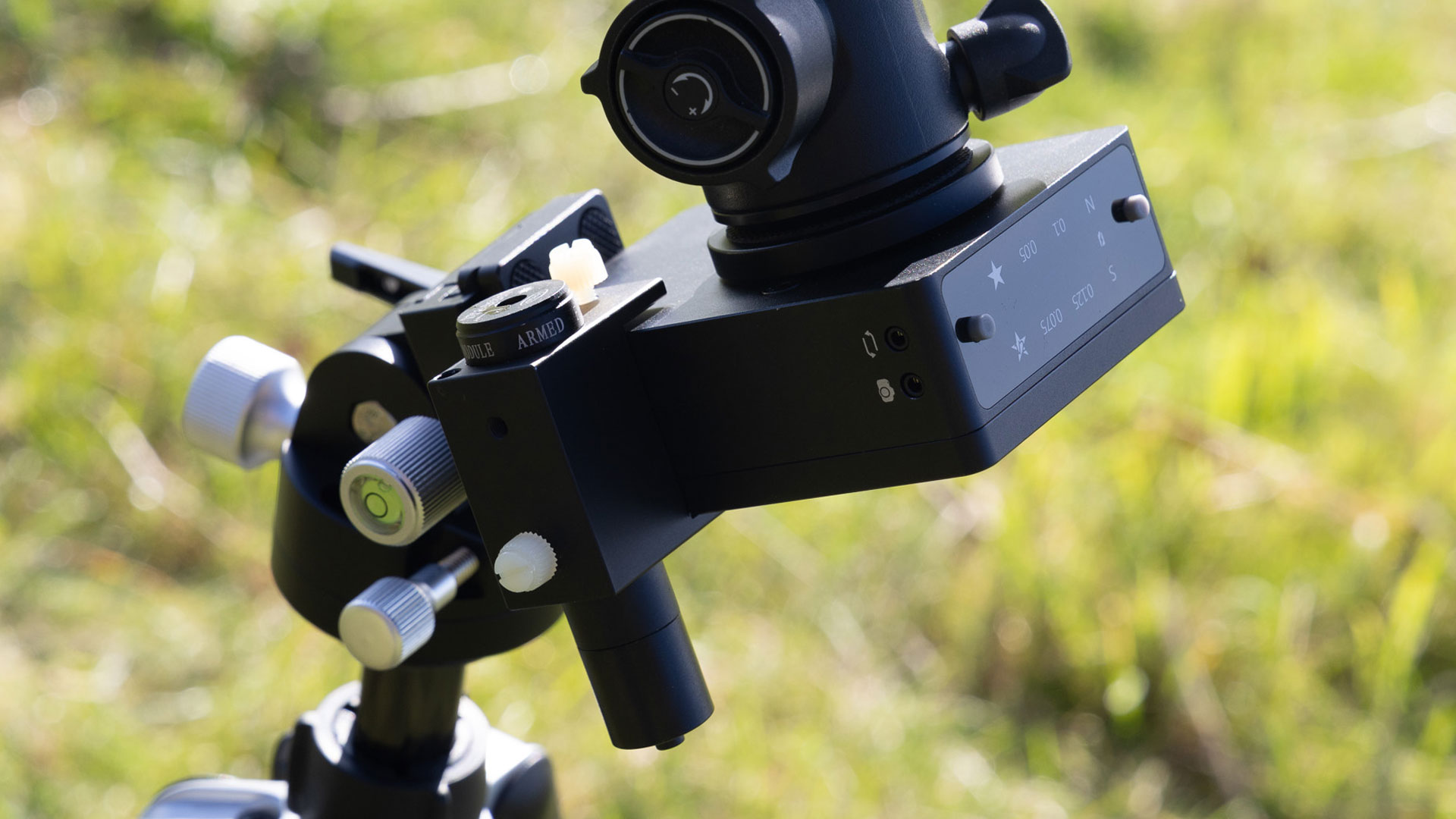
It's an impressive piece of kit — even with a Canon EOS R6 and Sigma's heavy 14mm f/2.8 ART lens attached, turning the screws still yielded accurate movement, and made getting the MoveShootMove initially lined up much easier. If you don't have a Wedge already, do yourself a favor and pop this in your online shopping basket. It's likely any precision-made, geared tripod head will do the trick. Immediately though, you can see that the true price of the MoveShootMove, the amount you need to spend to be able to actually use the tracker, starting from zero previously-owned astrophotography kit, is much higher than the $250 mark. By the time we the laser pointer and the geared tripod head, we'd spent $400 (roughly £297), which brings the MoveShootMove much closer in price to bigger, heavier entry-level star trackers. Still, saving money is saving money, so we’re prepared to forgive the MoveShootMove if it actually works.
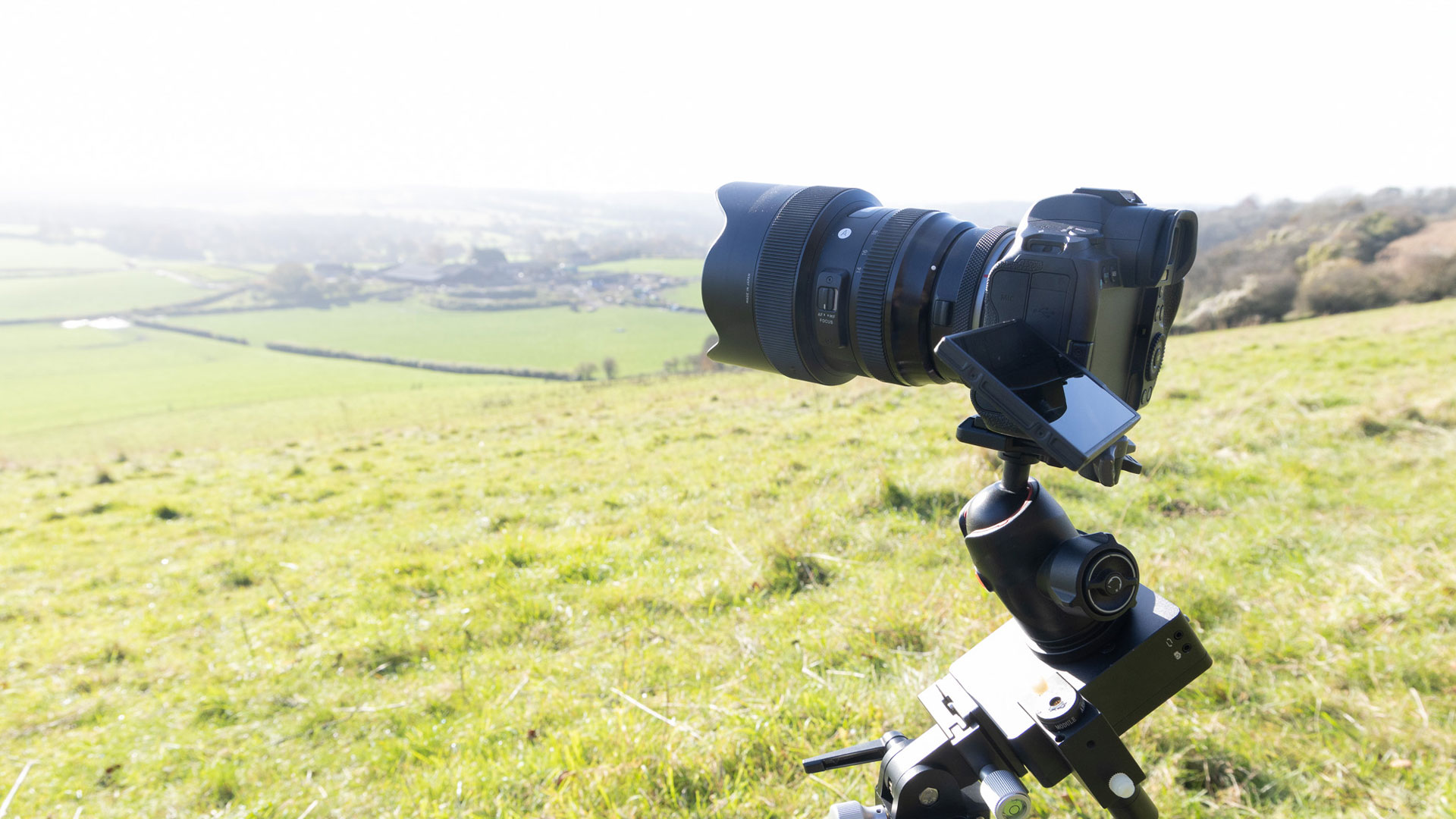
MOVESHOOTMOVE REVIEW: FUNCTIONALITY
- Simple to use after initial set-up
- Excellent battery life
- Works best with wider lenses
Setup is a touch fiddly, although this lines up with the experience of setting up any star tracker. A bit of experience comes in handy, so just as you would any other bit of new, specialist kit, we'd suggest at least a couple of familiarization runs before you head out on the once-in-a-lifetime trip. There's a bit of assembly needed first – the brass 3/8-inch screw that goes in the middle of the tracker; then you need to attach a tripod plate to one of the 1/4-inch screw holes. Which hole you choose will depend a little on exactly what kind of composition you want.
The laser pointer is simple in theory — attach it to the side of the MoveShootMove and point it at Polaris, then adjust your tripod head until it (and essentially, the MoveShootMove rotator) are pointing straight there. The laser is a simple, one-button job, although you can adjust its beam for better accuracy. It comes with a rechargeable, lithium-ion battery rated at 280mAh, which gave us several nights' use on a single charge. We did spot in the manual a recommendation that the laser is not run for more than 30 seconds at a time; we definitely powered it for a little longer than that on a few of our more laborious efforts to get the MoveShootMove lined up with Polaris, but given that the power button is a single push, we stored the battery outside the laser to prevent it accidentally turning on.
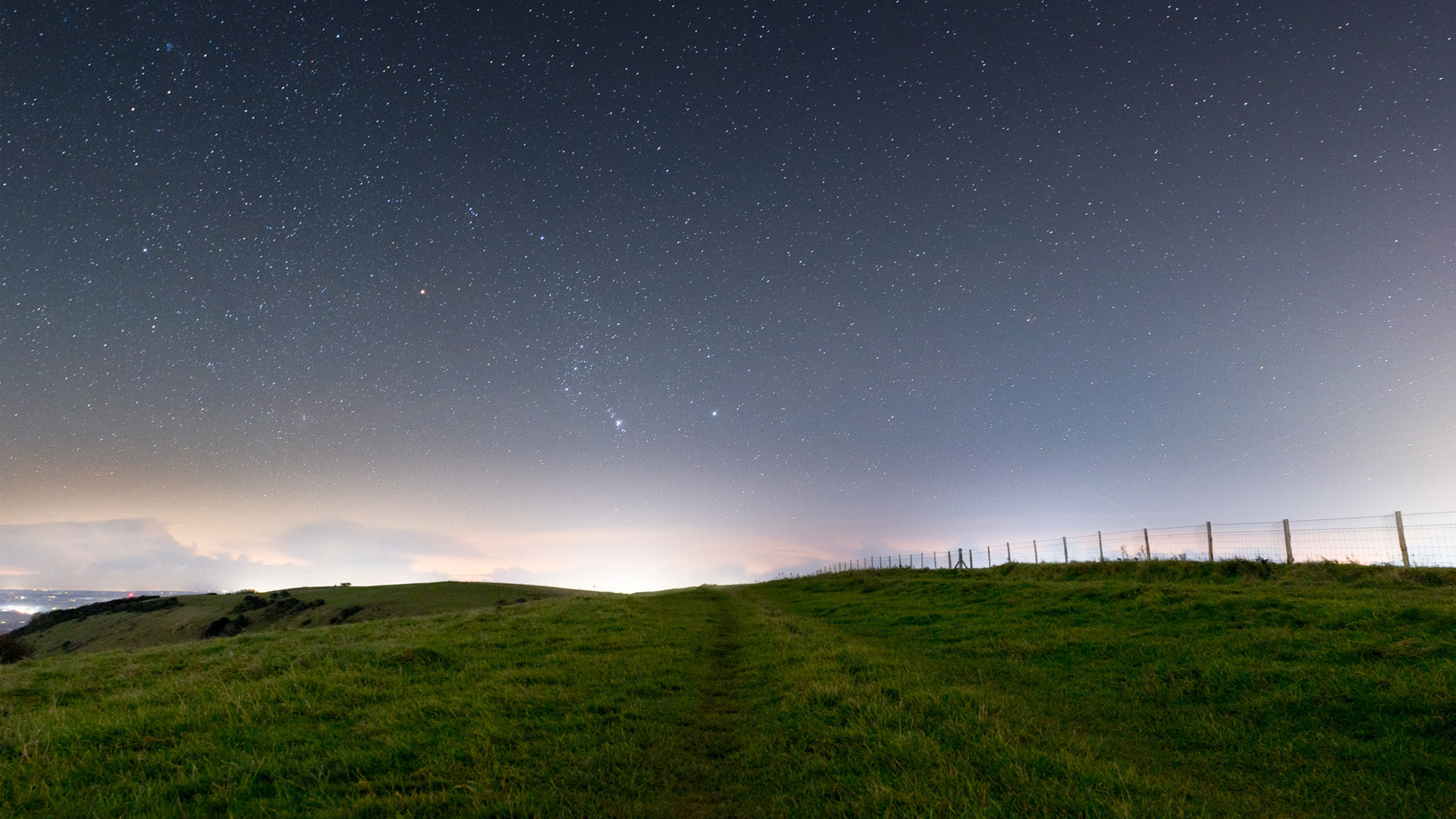
Once the rotator is lined up, you can mount your camera to it, and adjust your camera's ball head until you've got the composition you want. Then you double-check polar alignment, and suddenly the sky becomes a playground. If your composition is of just stars you can simply power the unit up and start shooting as it starts turning immediately. Or, if you want to create a blended exposure with a static foreground and bright background stars, you can shoot your static composition first, then start the MoveShootMove and begin a longer exposure, compositing the two later.
Use is incredibly simple from this point on: turn on the MoveShootMove and it starts turning, allowing you to shoot as many long exposures as you like without worrying about how your stars are composed. There are complexities and gotchas, of course, although these aren't unique to the MoveShootMove. That car that drove past a mile away? Light pollution. That gust of wind halfway through your shot? Ruined sharpness. But we did find that the MoveShootMove was a reliable unit. On our 14mm lens we were able to get shots up to 5 minutes (we didn't need any longer), and on our longer 24mm lens three minutes or so was the longest reliable mark we could hit. We got sharp frames at longer exposures than that, but they were a bit hit and miss. Ultimately, though, the experience of shooting long exposures that aren’t ruined by noise is what any star tracker is about, and if you’re shooting wider lenses the MoveShootMove could well be the only tracker you ever need.
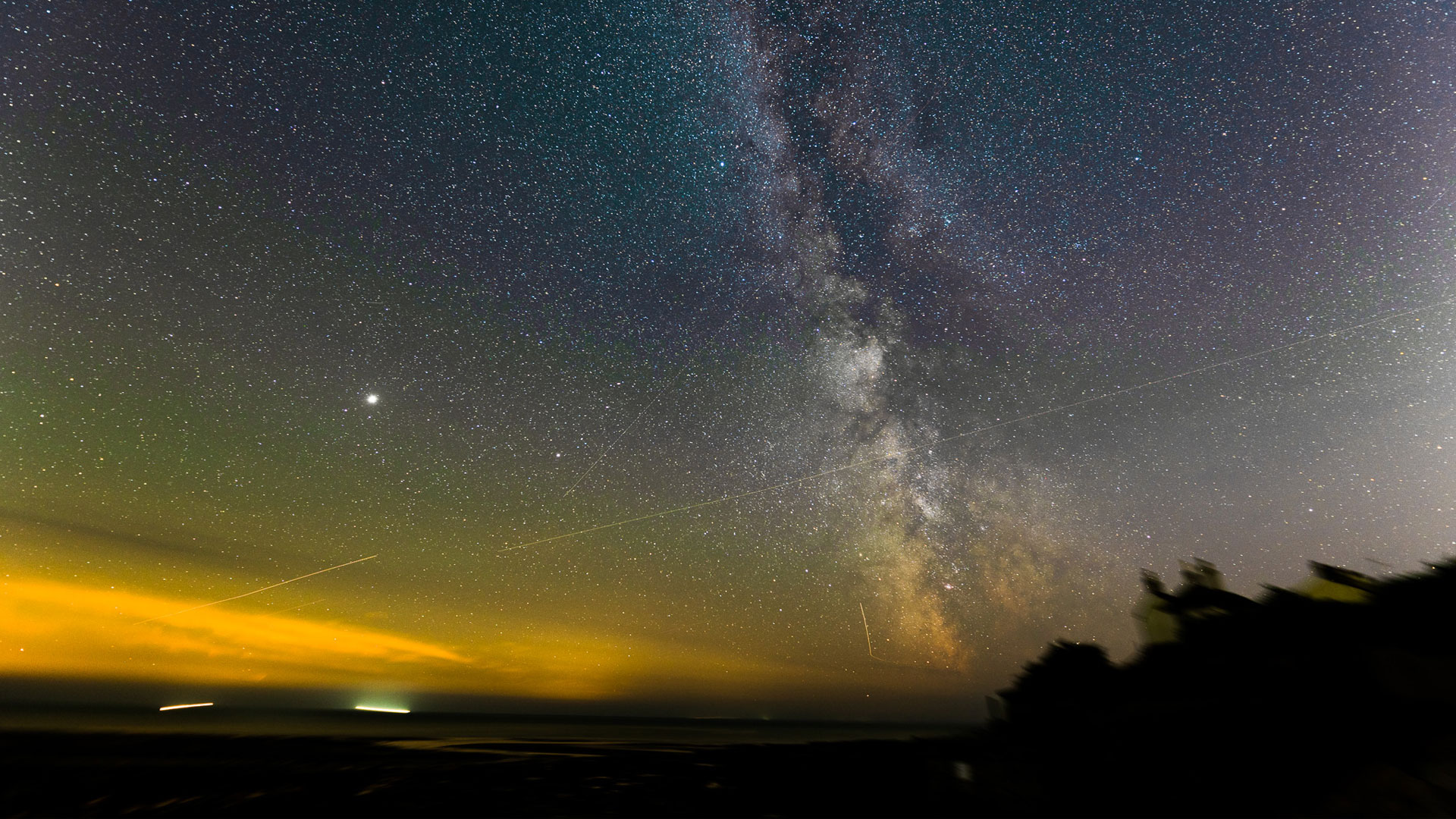
Once the MoveShootMove is set up and turning, there is not a lot to think about. We worked out what our shutter speed should be by shooting an ultra-high ISO shot at first just to get a baseline, then worked backward, removing ISO and adding shutter speed in equal measure until we had a suitably low ISO and the kind of shutter speed that would make devotees of the 500-rule have terribly bad dreams.
Unequivocally, the MoveShootMove star tracker works. Impressively well, at that. We found that ultra-long exposures, four minutes or more, gave us quite hit-and-miss results, but that's less because the MoveShootMove is inaccurate and more because a lot can go wrong in four minutes. A gust of wind, a passing car or someone walking too close to your tripod can all add up to a ruined exposure. We found very reliable exposures around the three-minute mark on a succession of excellent Sigma astro lenses — the 14mm f/1.8 ART, the 20mm f/1.4 ART and the 14-24mm f/2.8 ART.
The makers of the MoveShootMove make some impressive claims about its capacity, chief among them that it can hold, and more importantly work, with up to 3KG of kit on top of it. That puts you in the ballpark of cameras such as the Canon EOS 1D-X Mark III, complete with something like Sigma's 1.2KG 14mm f/1.8 ART lens mounted to it.
It's not perfect; if the MoveShootMove was mounted a little sideways, and then our camera was rigged sideways on top of that, we occasionally found that our camera would slip on top of the rotating disc on the top of the tracker, with predictably poor photographic results. In particular, although our 70-200mm f/2.8 lens undoubtedly sits within the MoveShootMove's theoretical maximum payload, anything but a truly flat composition saw it slipping on the rotating disc. We found smaller, lighter, shorter lenses were the ones that shot sharp stars most reliably.
SHOULD YOU BUY MOVESHOOTMOVE?
We can't think of a more compact or portable star tracker. In terms of carrying capacity, the MoveShootMove is definitely at the low end. 3KG is impressive but there are plenty of star trackers, albeit normally more expensive ones, that will take more. Certainly, our experiments with longer lenses suggest that if you want to shoot deep-field astrophotography, a butcher star tracker is going to be the way to go, and that goes double if you want to shoot using a telescope and a DSLR adapter.

But if you're happy with comparatively short lenses, and simply want wide-field astrophotography at a reasonably affordable price, remembering to factor in a proper tripod head and the laser pointer, the MoveShootMove is an almost absurdly portable little gizmo that you'll easily be able to justify throwing into a bag if you're going somewhere with a promisingly dark sky and some interesting wide-angle compositions.
For longer lens photography, you'll outgrow the MoveShootMove very quickly, particularly if you have grand deep-field ambitions, which is where the likes of the Star Adventurer 2i ($450) or even bigger star trackers come in. If you want to whet your astrophotography whistle, this is a cheap, portable and easy-to-use way in.
IF THIS PRODUCT ISN'T FOR YOU
Hoo boy. The question of which star tracker you should buy as an alternative to this is a thorny one because the MoveShootMove is the very thinnest end of the wedge. If you want a tracker that can accommodate a large-aperture telephoto lens or an actual telescope, you’re going to want deep pockets.
One worth considering is the well-reviewed Sky-Watcher Star Adventurer, whose 2i Wi-Fi Pro Pack can be bought for around $355, which, once you’ve bought the MoveShootMove and its required accouterments, isn’t much more expensive. You get an integrated polar alignment scope, plus a larger 5KG capacity, and an equatorial wedge base for more accurate alignment. It’s heavier and more expensive though.
For those allergic to carrying more than they need to, there’s also the Sky-Watcher Star Adventurer Pro Mini, which at $350 is very much a MoveShootMove competitor, coming with a polar scope and the same 3KG payload limit as the MoveShootMove.
Dave is a former contributing writer to Space.com in the areas of astrophotography and astronomy, often for reviews of various lenses used in capturing images of the stars. He lives and works in Hobart, Tasmania and is the Associate Professor of Art at the University of Tasmania, where he serves as School Research Coordinator and Head of Photography at the Tasmanian School of Art.
